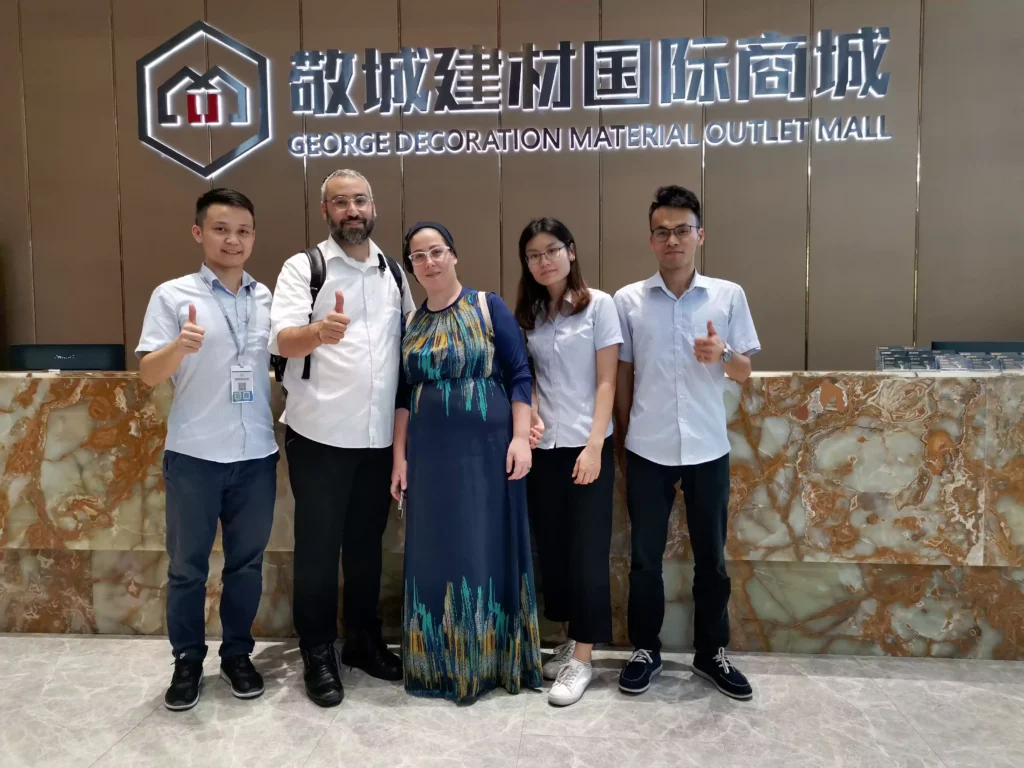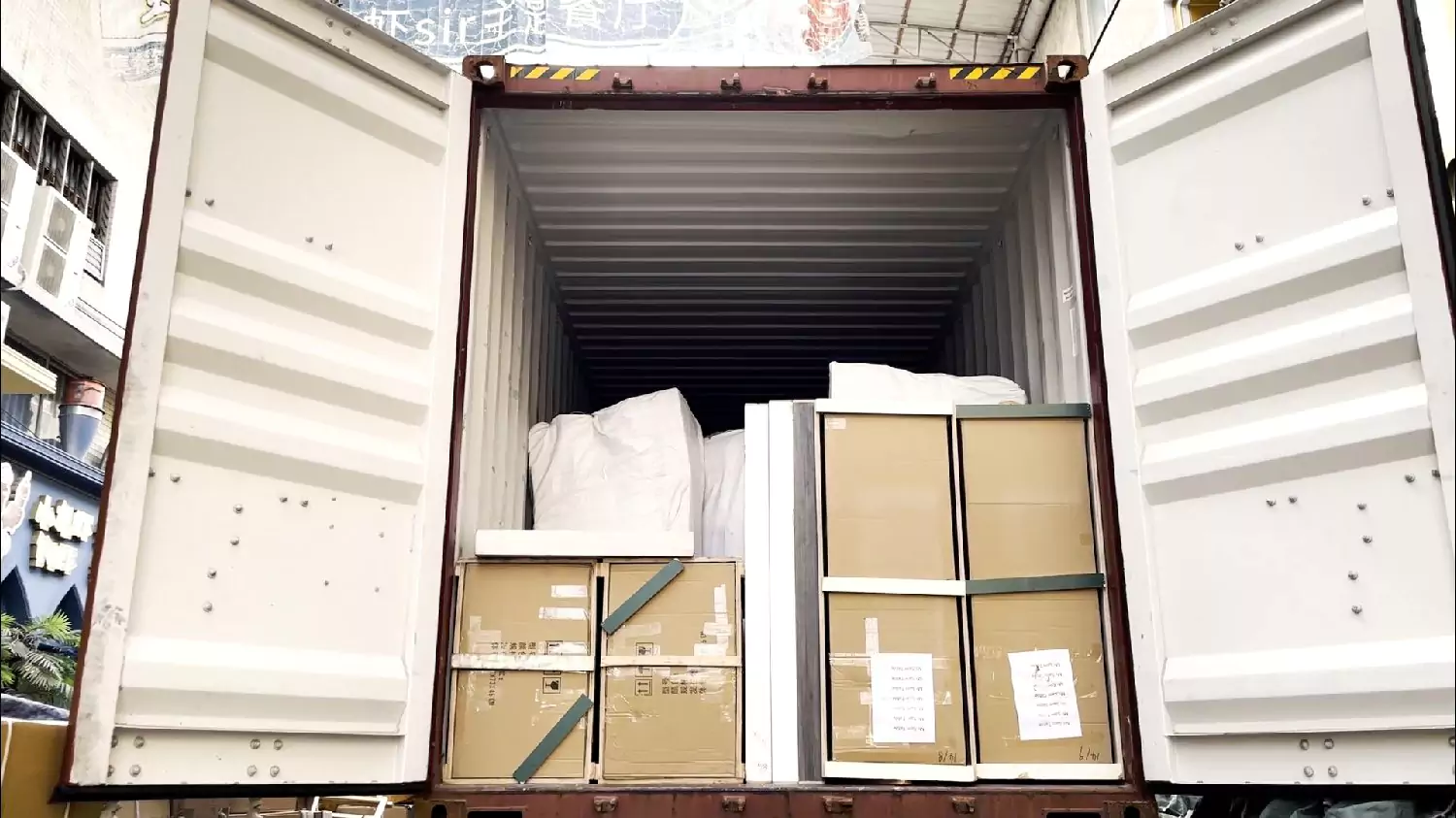Introduction: Why Source Building Materials from China?
China is still the number one place to get construction and building materials because it is cheap, efficient in large-scale production, and has a supplier network. Importers get competitive prices on bulk orders and the widest range of products — the whole palette from structural steel and tiles to windows, floors, and modular prefab units. The advanced manufacturing infrastructure of China also supports the high-volume demands with reliable turnaround times.
However, there are still some pitfalls, like quality control, transportation issues, and regulatory compliance, that make the process extremely hard if you don’t have a good partner. This is exactly the point where the George Project becomes important — a one-stop solution provider that simplifies the whole journey. They assure the materials are of the right quality, come on time, and are within the budget through the same place from design and production to quality checks and logistics, and an all-in management system for the utter relaxation of mind.
What Materials Can You Import from China?
In the field of construction and building materials, China is the largest global manufacturing leader and can still offer a variety of products that are the perfect fit for different project sizes and budgets. Let’s go through this in more detail:
| Category | Examples |
| Tiles and flooring | Ceramic, porcelain, vinyl, laminate, wood alternatives |
| Doors and windows | Aluminum, uPVC, glass in various styles |
| Sanitaryware | Sinks, toilets, faucets, bathtubs, bathroom fittings |
| Roofing and insulation | Metal sheets, shingles, waterproof membranes, thermal insulation |
| Paints, coatings, hardware | Interior and exterior paints, coatings, hardware tools |
| Prefabricated house components | Wall panels, steel frames, modular units |
| Electrical and plumbing systems | Switches, lighting fixtures, wiring, pipes, fittings |
| Custom furniture and cabinetry | Kitchen cabinets, wardrobes, vanities, etc. |
Step 1. Research & Product Selection
Before you bring in construction materials from China, it is crucial that you first identify your needs and then familiarize yourself with the market. This preparatory work has a far-reaching effect on the success of your procurement strategy.
Identify Your Material Requirements
Start by deciding the type of materials that your project will need. Are you planning to get structural components only, like rebar and steel beams? Or rather, are you going to finish your focus on items such as tiles, flooring, doors, and windows? Also, consider MEP (Mechanical, Electrical, Plumbing) systems that will consist of wiring, pipes, and fixtures. If going green is one of your priorities, then have a look at the products that are environmentally friendly and are made from bamboo, recycled aggregates, and low-VOC paints, which are extensively produced in China.
Conduct Detailed Market Research
On the other hand, keep an eye on the fads that are emerging in the sector, for example, there is a growing need for prefabricated buildings, smart home integrations, or modular construction materials. You should also look into ways to make sure these materials are in compliance with the rules that exist in your country. For example, the requirements that ASTM (US), CE (Europe), or EN (global) standards put forth. This makes it easier for the goods to move through customs and also eliminates the possibility of inspection failure in the installation process.
Step 2. Find Reliable Chinese Suppliers
With your product list in hand, the following stage is to locate trustworthy suppliers in China who can satisfy your quality, price, and delivery time conditions.
Explore Sourcing Channels
There are several ways to connect with manufacturers and exporters:
- B2B platforms such as Alibaba, Made-in-China, and Global Sources offer a wide selection and initial supplier vetting.
- Attend trade shows like the Canton Fair or China International Building Materials Fair to meet suppliers face-to-face and inspect product samples.
- Work with sourcing agents who assist with supplier verification, negotiation, and logistics.
- Opt for direct factory sourcing, ideal if you’re placing large orders and want better control over customization and pricing.
Vetting Suppliers
Before placing orders, conduct thorough due diligence:
- Check for valid business licenses, export certifications, and compliance documents such as ISO 9001 (quality) and ISO 14001 (environmental) standards.
- Arrange factory audits to assess their production capacity, workforce conditions, and quality control procedures.
- Don’t forget to confirm MOQ (Minimum Order Quantity) and negotiate terms to suit your project timeline and budget.
George Project, with its base in Foshan—the epicenter of top-notch building materials in China—is a major one-stop shop for foreign construction and renovation projects. In case you are looking for tiles, windows, furniture, or even a complete prefabricated system, George Project is the place to go, as they give you full support from architectural design, CAD drawings, customized manufacturing, factory-direct pricing, and quality control.
Their huge showroom of over 30,000 square meters gives clients a chance to look at a wide range of styles and materials, while the multilingual staff ensures that communication is always smooth. In addition, George Project will also be there for you to verify the compliance with the international standards (e.g., CE and ASTM), to handle the paperwork, and to take care of the transport of your goods.
Step 3: Quality Control & Compliance
You must be very careful with quality assurance and regulatory compliance while importing construction materials from China. A bad decision here can cause you a big safety risk and result in rejected shipments at the border.
Pre-Shipment Checks
Before goods leave the factory, arrange thorough quality checks:
- Testing in a laboratory is a must for the main structural and finishing materials. It consists of tests for tensile strength, chemical analysis, flammability, and durability, making sure the materials are safe for your particular use.
- Third-party inspections from agencies such as SGS or Intertek provide greater safety. Those inspections search for defects, dimensional accuracy, material uniformity, and workmanship, which are the most important things; thus, if any conflict appears, it will be easily solved.
Compliance Verification
Also, you must make sure that the materials correspond to both Chinese GB standards and those of your country or region:
- Within the EU, it is generally necessary for the materials to have CE certification and comply with the EU directives concerning fire safety, environmental performance, and energy efficiency.
- In the US, meeting ASTM standards, OSHA regulations, and EPA requirements may be relevant, particularly for public or commercial buildings.
Essential documentation includes:
- Certificates of Conformity
- Material test reports
- MSDS (Material Safety Data Sheets)
- Import permits or product declarations (where applicable)
Step 4: Negotiation & Contracts
Finding a trustworthy supplier is only the first step; negotiating favorable terms and getting a legally binding contract are equally important.
Pricing and Incoterms
Start a negotiation by talking about the unit price in relation to the quantity and quality standards that you require. To illustrate this, a supplier may offer you a very deep discount if you agree to the total quantity of the order and might even allow you to change the Minimum Order Quantities (MOQ) if the overall procurement scope is large, particularly if you are sourcing a mixed amount of construction materials.
The choice of Incoterm (International Commercial Terms) is just as important. If you opt for maximum control and you have the necessary experience in managing shipping, use EXW (Ex Works) — you oversee the whole process from the factory onwards.
Do you feel that a middle position is better? Then FOB (Free on Board) means that the seller is responsible for local logistics and delivery to the port, while you carry on the journey after it is on board.
In case you want to be sure nothing goes wrong, CIF (Cost, Insurance, and Freight), along with shipping and insurance until your destination port, gives you the fullest peace of mind as an international buyer who is still new to the process.
Contracts
A contract that has been carefully drawn not only protects your investment but also creates trust between you and the other party. It should have a very detailed description of the product—like the materials used, grades, color matching, surface finishes, and durability expectations—that are in line with the construction project’s requirements.
It is common practice in international trade that payment terms are 30% as a deposit and 70% after receiving the Bill of Lading (B/L). This scheme gives the party receiving the goods a certain amount of security by matching the final payment with the confirmed shipment.
Step 5: Logistics & Shipping
Proper logistics planning guarantees that your goods come in good condition and are delivered on time—whether your location is a city apartment or a remote commercial facility.
Choose Suitable Transportation Mode
- Sea freight is the cheapest way to transport large, heavy shipments.
- Use FCL (Full Container Load) for bulk purchases to reduce costs per unit.
- LCL (Less than Container Load) works for smaller or mixed product orders but may involve shared containers and longer lead times.
- Air freight is perfect for time-sensitive goods and of the highest value, such as lighting, electronics, or custom-finished products. It is more expensive, but it guarantees fast delivery—usually within 3–7 days.
Packaging and Freight Handling
Firstly, proper packaging is very crucial to ensure the materials of construction are not damaged while being transported over long distances. A freight forwarder who specializes in building materials can be very handy—taking care of everything from customs clearance and export declarations to warehousing and last-mile delivery.
Make sure that you have all the necessary shipping documents ready, such as the Bill of Lading (B/L), commercial invoice, packing list, and certificates of origin or compliance if required, so that the customs procedures will run without any hindrance.
George Project assists this stage by taking care of the entire logistics—right from the factories, at the port, through to customs and even delivery. Their trusted freight network and system monitoring not only minimize hold-ups but also make sure your supplies flow smoothly across borders.

Step 6: Customs & Import Duties
To avoid unexpected issues, properly classify your goods employing HS codes (ceramic tiles: 6907; steel: 7210) and find out the import duties using online calculators. For prompt customs clearance, make sure to hand your representative all the necessary documents, including the Bill of Lading, invoice, and certificate of origin.
It is advisable to work with a licensed customs broker who can simplify the procedure and take care of local regulations. However, keep in mind that there are limitations on the list of commodities (such as timber), and such commodities may require extra confirmation of their issuance and result in delays.
Step 7: Risk mitigation & best practices
Reduce the risks of your transaction by not paying the whole amount upfront — choose the Escrow service or a part payment. Also, be sure to cover your freight with an All-Risk policy and prepare yourself for possible disruptions during transport, for example, operation at the port being delayed or the supplier not working according to plan.
To have long-term success:
- Good relationships with reliable suppliers are a must. This way, better pricing and terms come naturally.
- Stay updated on China’s changing trade policies, including export VAT rebates and tariff adjustments, to help keep your costs down.
Don’t Just Import—Look for a One-Stop Construction Solution
Importing building supplies from China is just one of the many steps in a complex process of completing a building project successfully.
Problems of Dispersed Sourcing
Managing ten to five different suppliers, the risks increase exponentially. You have to deal with inconsistent quality control, varying compliance with international standards, and significant logistical challenges when you coordinate multiple shipments. Different co-packers may have different packaging standards, the handling of documentation, and delivery times; hence, delays and higher costs due to middleman fees, customs, and storage are likely to happen.
Advantages of Integrated Providers
On the other hand, dealing with a construction material supplier that is fully integrated makes the whole process much easier. A one-stop solution offers the convenience of having a single point of contact from the time of design consultation to manufacturing, quality inspections, shipping, customs clearance, and even after-sales support.
- In-house design and material recommendation services to ensure your materials are fit for purpose and aligned with your project vision.
- Comprehensive quality control systems, including factory audits, ongoing supervision, and pre-shipment inspections, are used to guarantee product consistency.
George Project is a one-stop shop that makes it easy for you to get your project done without any problems. By harnessing customer support, quality maintenance, and operational tracking in one place, George Project not only assures consistent quality, reliable delivery times, and budget compliance but also streamlines your overall experience. This turnkey method eliminates the usual issues of scattered sourcing and gives you the freedom to concentrate on the project’s success instead of dealing with supply chain problems.

Conclusion
Cost savings, a wide range of products, and access to innovative manufacturing are some of the main benefits of importing construction and building materials from China. On the other hand, dealing with supplier selection, quality control, compliance, and logistics can be highly complex.
To make a hassle-free experience, working with an integrated provider like George Project can make the whole journey easier—from design and production to delivery and after-sales—thus helping you complete your project on time, within budget, and to the highest standards.



